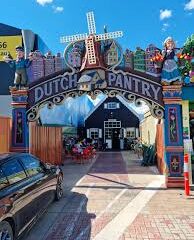The Laidlaw World Cup Down Under, nestled amidst the post-war resurgence of football fervor in Victoria, stands as a testament to the multicultural tapestry woven into the sport’s fabric. Its origins traced back to 1949 with a diverse array of teams taking to the field, including representatives from Great Britain, Italy, Yugoslavia, and even a spirited ensemble dubbed ‘New Australians.’
As the tournament evolved, so did its significance, morphing from the embryonic stages of the Victorian Olympic Games to the revered Laidlaw World Cup, christened after D. H. Laidlaw, president of the Ringwood club, who presented a prestigious trophy to adorn the competition. Yet, amid the euphoria of triumphs and the echoes of heated contests, controversies simmered beneath the surface, with allegations of player remuneration and governance disputes casting shadows over the event.
Amidst the tumult, the Dutch imprint left an indelible mark on the tournament’s annals. In 1956, Holland emerged triumphant, igniting Middle Park with a display of prowess that saw them outclassing Italy in a resounding five-one victory. The Dutch squad, adorned with names like Van Egmond, Remmers, and Schipperheyn, etched their place in history, elevating the orange hue of their jerseys to symbolic heights.
Laidlow Cup 1956
| Holland came out on top in 1956. Italy beat Australia by three goals to two in the semi-final at Middle Park on 29 September. Italy got the winner very late in the game.Holland downed Poland also by three-two and went on hammer Italy five-one in the final. The Dutch squad included: Van Egmond, Peet, Cor Mathyssen, Remmers, Bakens, Olifiers, Peter Schipperheyn, Luyten, Huygen, Sjel (Mike) de Bruyckere, Teuben. Reserves: Steenbergen, Sinnema. |
However, the Laidlaw Cup wasn’t just a stage for international glory; it served as a crucible for local talent to shine. Ted Smith, with his reminiscences of battles waged and alliances forged, offers a poignant narrative of camaraderie and competition amidst the backdrop of evolving football culture.
Beyond the confines of Victoria, the Laidlaw Cup’s influence reverberated, inspiring similar competitions across Australia, each a testament to the enduring legacy of Parker’s vision. From Geelong’s New World Cup to the All Nations Cup in Melbourne, the spirit of the Laidlaw World Cup lives on, transcending boundaries and celebrating the beautiful game’s universal appeal.

Yet, amidst the tales of triumph and camaraderie, enigmatic puzzles linger, beckoning further exploration into claims of German victories and the labyrinthine pathways of football history. As the final whistle blew on the Laidlaw Cup in 1961, its legacy endures as a chapter in football folklore, a testament to the enduring power of sport to unite and inspire across generations and cultures.


